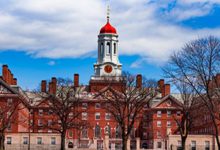The Supreme Court has banned the use of race-conscious practices in college admissions. However, enrollment at selective public institutions and selective private institutions has never reflected the diversity of states and the nation more broadly, even with affirmative action as a factor in admissions.
In our 2020 “Segregation Forever?” report, which examined the diversity of enrolled students at the 101 most selective public colleges and universities in the U.S., we found that since 2000, the percentage of Black students had decreased at 6 out of 10 of selective public institutions; only 9% of these colleges enrolled representative numbers of Black students, while a mere 14% enrolled representative numbers of Latino students. In two upcoming Ed Trust reports, we will examine how representative the nation’s 122 most selective private universities are of the nation’s Black and Latino populations. SCOTUS has ruled that selective universities, like Harvard, can no longer use race as one of various factors in admissions decisions; so the question remains, how have selective private universities been at enrolling Black and Latino students?
Black Student Representation at Selective Private Colleges & Universities
Unfortunately, we’ve seen little progress from private colleges and universities in enrolling representative numbers of Black students. Despite moderate increases in the enrollment of Black students from 2000 to 2020, nearly 80% (83 of 122) of institutions received D or F grades for Black student access in 2020. When looking at the eight Ivy League institutions, we found that they are inaccessible for Black students. Ivy League institutions earned an average score of 45% in 2000, and 52% in 2020. (Scores of 90 or higher received A’s. Scores in the 80s earned B’s, 70s earned C’s, 60s earned D’s, and scores below 60 received F’s). In fact, not a single Ivy League institution enrolled a representative share of Black students in 2020, despite having the ability to leverage race-conscious admissions. For these Ivies to reflect the Black population demographics of the states their students are from, they would need to enroll nearly 4,600 additional Black students combined; the group of 122 institutions would need to enroll an additional 30,000 Black students combined to be representative.
Latino Student Representation at Selective Private Colleges & Universities
The story for Latino representation at these selective private institutions isn’t much better. Since 2000, Latino enrollment has increased at many of these selective institutions; unfortunately, the increases are more attributable to demographic shifts than to conscious thought and concerted effort on the part of institutional leaders. Despite the small rise in enrollment, Latino students were underrepresented at 95 institutions (78%), based on the population demographics of the states from which students came, and 103 institutions (87%) earned a D or F grade for representation. Ivy League institutions were inaccessible for Latino students, earning an average score of 52 in 2020 (which is below the overall average score of 55). For these Ivy League institutions to be representative of the states their students are from, they would need to enroll nearly 7,000 additional Latino students combined, while all 122 institutions would need to enroll 53,000 more Latino students combined.
Despite the promise of affirmative action and the use of holistic and race conscious admissions in college admissions, most public and private colleges and universities have so far failed to diversify their student enrollment. But if the Supreme Court ends affirmative action, things are likely to get worse unless more is done to improve representation among students of color at selective public and private universities and in higher education broadly. It’s also clear that the status quo and what we value in admissions also need to shift away from factors and experiences that benefit and privilege wealthier White applicants. We encourage readers to follow our ongoing series on affirmative action, where we will continue to highlight much-needed changes to admissions and ways to remove barriers. Additionally, we encourage readers to explore the student access data and scores for institutions nationally and in your state, which will be featured in our upcoming report, “Segregation Forever?: The Continued Underrepresentation of Black and Latino Undergraduates at the Nation’s 122 Most Selective Private Colleges and Universities.
Scroll up and sign up to be one of the first to receive this report when it is released.







